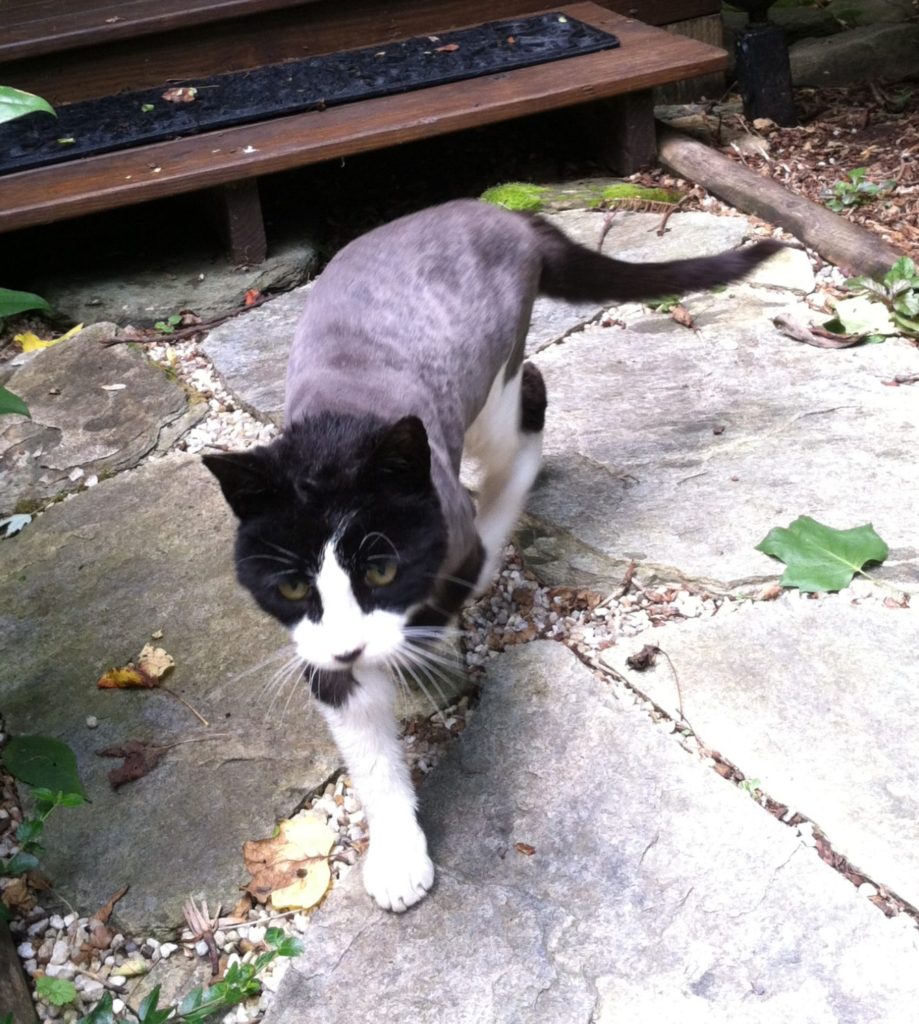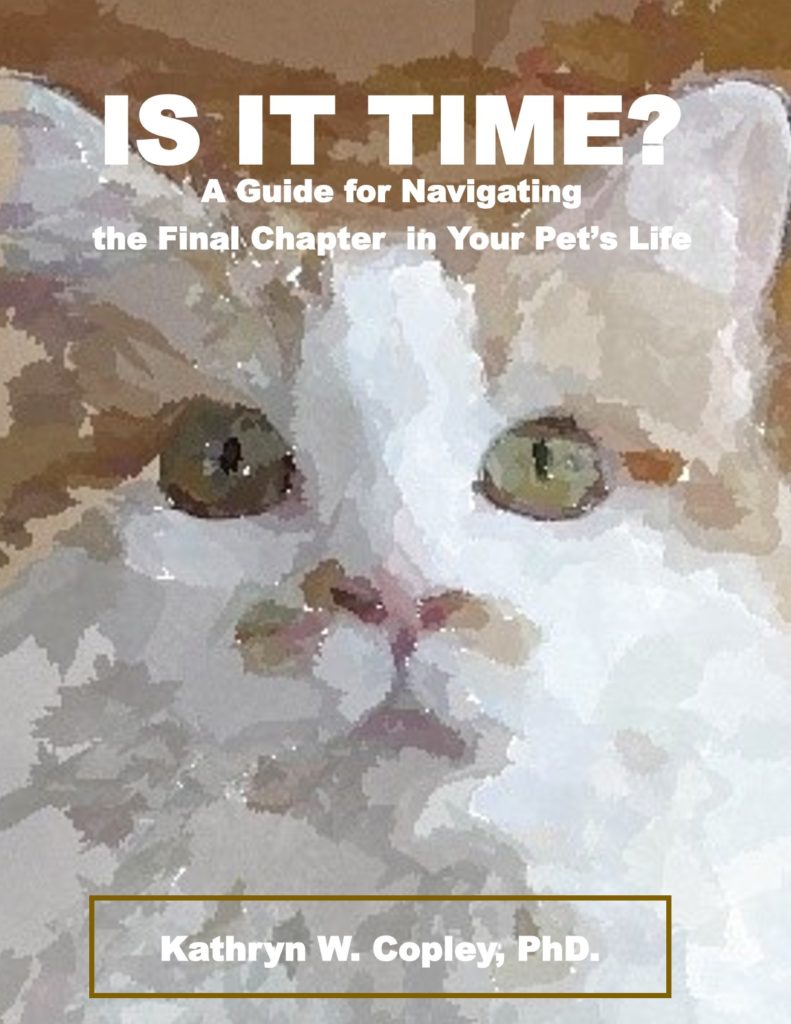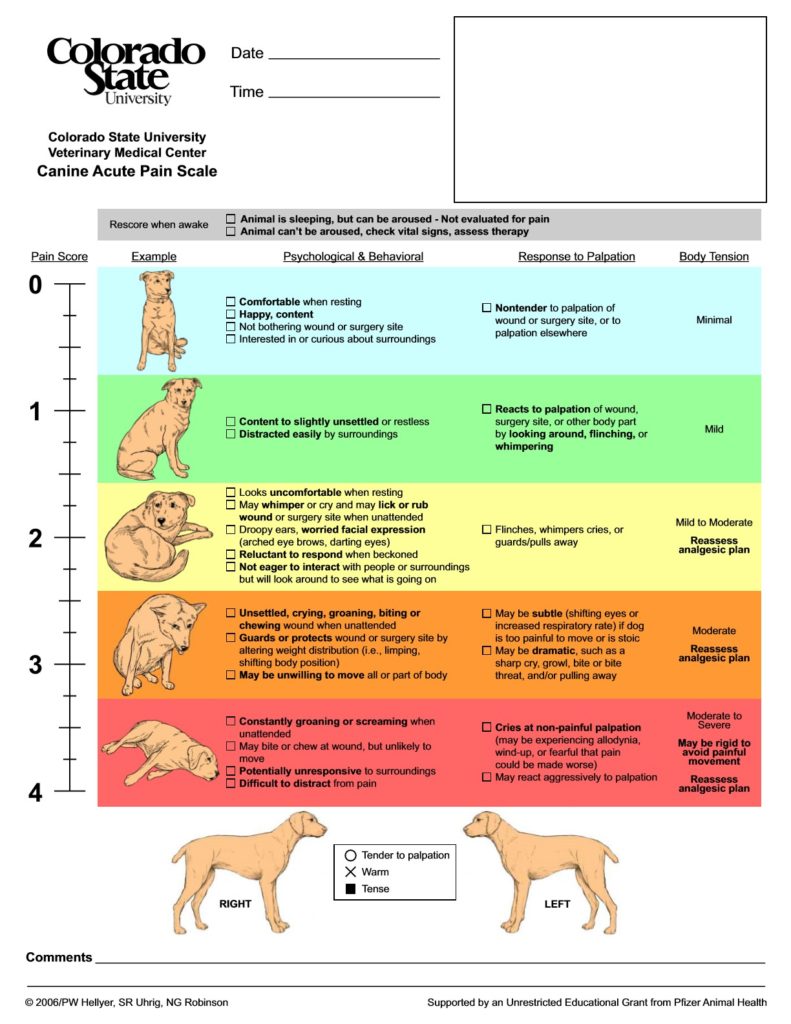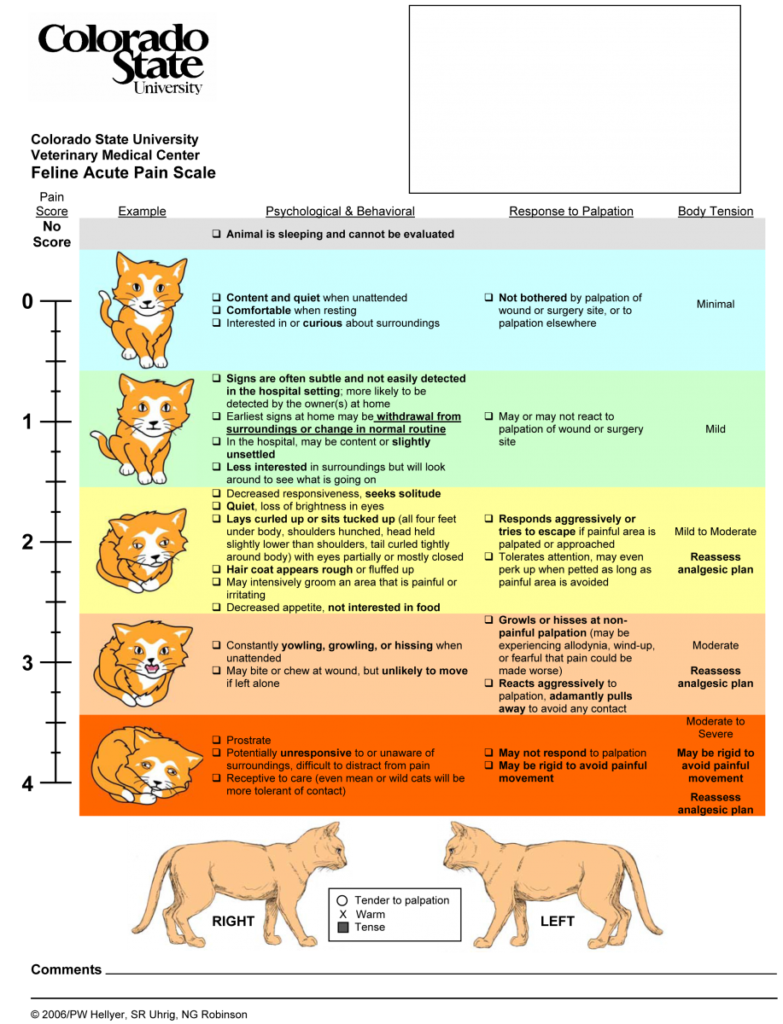
Arthritis left Freud unable to groom himself. A “summer shortie” (a close shave) temporarily eliminated that problem and left him feeling like suede. FREUD, who owned Kathy
See WAYS TO MAKE YOUR PET MORE COMFORTABLE for ways to improve quality of life.
Used with permission
Used with permission
Used with permission
Additional resource
SIGNS OF PAIN IN DOGS AND CATS
Googling assessing pain in pets brings up a wealth of information that can help you better understand what your pet is experiencing. For example, cats are stoic, with dogs more likely than cats to reveal their pain. And there are variations even within species and breeds, with Yorkshire Terriers and Asian cat breeds being perceived as more fragile and Labrador Retrievers seeming to be oblivious to pain.
Your pet’s discomfort may manifest itself in changes like restlessness, hiding, or disinterest in usually pleasurable activities. Sometimes you see or feel something that you recognize unmistakably as wrong – a limp, a wound, a lump.
There are many treatable reasons for your pet to experience changes in these areas. Two examples are arthritis and dental pain. Decay and abscesses can produce pain severe enough that your pet stops eating. Although dental problems may be expensive to treat, they are treatable. Arthritis interferes with a pet’s mobility just as it does ours. Walking, changing position from laying down to standing upright, and assuming the usual position for defecation and urination can all be painful.
Your dog and cat can express pain in ways that are both vague and obvious. Your veterinarian is the person best able to make sense of them. Among the changes you may see are:
EATING AND DRINKING
- Changes in food intake. Your pet may be “off his feed,” become a picky eater (showing disinterest in favorite foods, treats, or inducements like canned tuna or baby food chicken/beef/ham/turkey).
- Changes in water intake – either less or more. Is your pet mobile enough to get to its water bowl?
POSTURE AND MOVEMENT
- Stiff or unnatural gait or posture; lameness or limping.
- Inability to find a comfortable resting position or not moving when awake.
- Reluctance to or inability to use stairs, to jump, or to get up without assistance.
VOCALIZING
- Vocalizing more than usual (whimpering, whining, yelping, moaning), especially when being petted or groomed. Cat purrs can signify either contentment or an attempt to self-sooth in stressful situations.
GROOMING AND HYGIENE
- Reduced grooming (especially in cats). This is an area in which you can help with brushing that both you and your pet may enjoy if it doesn’t contact sensitive areas.
- Incontinence or changes in urinary and bowel habits like constipation or diarrhea, not using the litter box or “messing” in the house when there is no obvious explanation.
- “Self-traumatizing” by licking, biting or scratching an area of its body. Mammals may pluck out fur; birds may pluck out feathers.
INTERACTION and PLEASURE
- Decreased responsiveness to surroundings, like not giving attention when a door opens or a light is turned on.
- Less interest in activities that are usually pleasurable.
- Less social interaction with you (e.g., greeting you when you come home, a head-butt to invite a scratch).
- Spending time under beds or other quiet places inside or outside the home or otherwise being less “front and center” than usual or its opposite – unable to “settle” as shown by restlessness, pacing or repeatedly circling, then laying down and getting back up.
DEMEANOR
- A “facial expression” that is generally less alert, eyes that are vacant rather than clear and bright.
- Aggressive acts from an otherwise mellow animal or showing signs of annoyance specific to its species, like flattened ears or tail flicking in cats.
OTHER
- Vomiting.
- Labored breathing, increased respiration or panting unwarranted by exertion.
Scales and checklists
Checklists and scales are no substitute for a veterinarian’s assessment, but they can help laymen assess and track changes in their pet’s pain. Begin with something as simple as noting good and bad days on a calendar. As bad days become more frequent, consider monitoring your pet’s weight visually and with a scale, remembering that dental pain or arthritis may be the culprit in weight loss rather than a terminal condition.
The scientific nature of pet pain scales developed by veterinary schools, veterinary medical associations, or humane organizations can provide more assurance that you are neither missing anything nor drawing more dire conclusions than necessary. A scale to assess chronic pain it probably more useful than one to assess acute pain.
Using a quality-of-life scale in conjunction with a pain scale can give you a better over-all picture because pain scales may not ask about whether your pet can still do daily living activities and whether it still enjoys things like going outdoors or being petted.
As you investigate pain scales, you’ll discover that some are created for a veterinarian’s use rather than for you, the pet owner. Nevertheless, they can provide valuable information.
Pain checklists and scales can help you quantify and track your pet’s condition, but they aren’t substitutes for your veterinarian’s assessment.

All the named animals pictured in this blog were someone’s treasured pet. They may have crossed the Rainbow Bridge, but their absence makes them no less beloved.


I may not know what tomorrow will bring, but today I have you.


